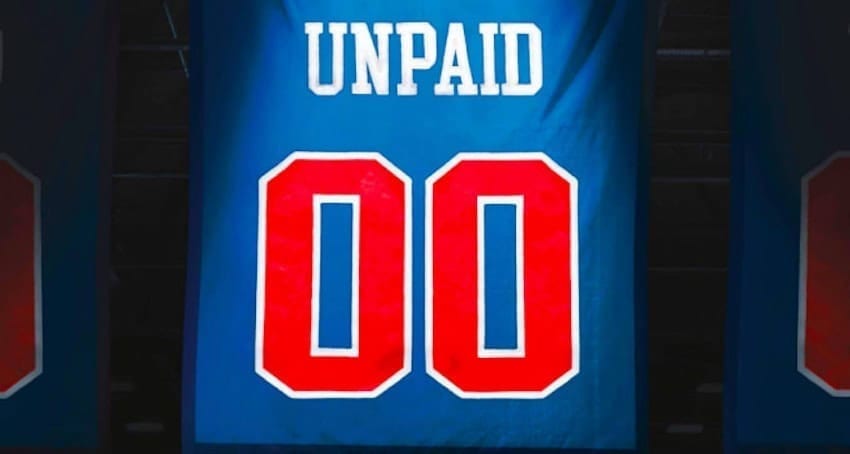Postseason play is what makes sports great, especially in the NCAA. However, in college sports playing in the postseason is not a given. The assumed reasons for teams not being eligible for the postseason are not winning or that program broke an NCAA bylaw. NCAA sanctions have cost teams from being eligible for the postseason. However, a program could be ineligible for the postseason if they are not performing up to academic standards. Because of this, the Academic Progress Rate initiative was started by the NCAA.
APR Holds Universities Accountable for Academic Success
The Academic Progress Rate was an initiative that was adopted by the NCAA in 2004. The initiative holds universities to a standard of ensuring academic success for their students. The NCAA’s official site says the initiative “holds institutions accountable for the academic progress of their student-athletes through a team-based metric that accounts for the eligibility and retention of each student-athlete for each academic term”.
The APR measures student-athletes’ academic progress by three factors:
- The student-athlete is receiving financial aid that is athletically related.
- By how long the student-athlete stays in school.
- What type of grades student-athletes receive.
The APR score is related to specific programs (football, basketball, etc.) within a university’s athletic department. The minimum multi-year score needed for a team to be postseason-eligible is 930. There have been programs who have struggled to obtain this score. A good APR score is 980, with the highest obtainable score being 1,000.
APR’s Requirement for Athlete Retention is an Issue In College Football and Basketball
One of the factors that contributes to a program’s APR score being lower is that there are players that leave school early to go pro, especially in football and basketball. In basketball, a school truly cannot form a “one-and-done” team, in the case of college basketball, because of this rule. The rule impacts how coaches, such as John Calipari and Mike Krzyzewski, recruit. Both Calipari and Krzyzewski are known for recruiting the top high school players, who go pro after one year.
To a lesser degree, the APR initiative also impacts the scores for football teams. Players can leave after they have been in school for three years to play in the NFL. The NCAA may need to amend the initiative, as the cases of players leaving school early in college basketball and football is becoming more common.
UCLA Men’s Basketball Team Able to Become Eligible for 2021 Postseason
On January 22, 2020, it was reported that the UCLA Bruins men’s college basketball team would be eligible for the 2021 postseason. They barely squeaked by the minimum APR score required to be eligible. Being eligible for the postseason is a big deal for first-year coach Mick Cronin. UCLA has been on the downswing as of late, so getting to the postseason is important in the early stages of Cronin’s tenure.
The Bruins currently have a 12-10 (5-4 Pac-12) record this season. They most likely have to win the Pac-12 conference tournament to be considered a threat for the NCAA Tournament. They also are dealing with the transfer of star recruit Shareef O’Neal. The Bruins signed Daishen Nix, a five-star Point Guard and number 20 in the ESPN 300, for next season.
Florida State Football Had Similar Issue in 2019
The Florida State Seminoles football program had a multi-year APR score of 936 in 2019. It was the worst score out of all of the football Power 5 schools. Jimbo Fisher left the program as Willie Taggart took over. This coaching change led to a lot of player turnover within the program. Player turnover hurts a program’s overall APR score.
Willie Taggart was fired by Florida State this past November, and the program hired Mike Norvell. There may be more player turnover because of the new hire, which stresses the importance of Norvell building a culture of accountability at Florida State. The Seminoles cannot afford to have low APR scores. Consequently, the prospect of not being eligible for the postseason may be a real possibility for the program.
The Future of APR
There are multiple factors that go into how the APR is calculated. That has made programs take the threat of not being eligible for the postseason seriously. It will be interesting to see if there are adjustments made to the APR model based on the number of players that choose to leave for professional leagues, most notably the NFL and NBA. There are numerous ways a player views their education, and if athletes start receiving more financial benefits from the NCAA, could there be changes to the APR model? For now, the model has proven effective, as programs have taken it seriously enough to be above the benchmark of 930.



